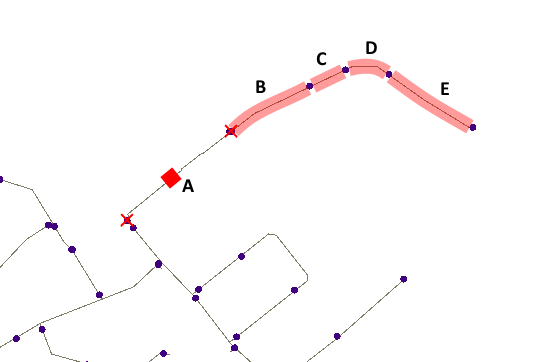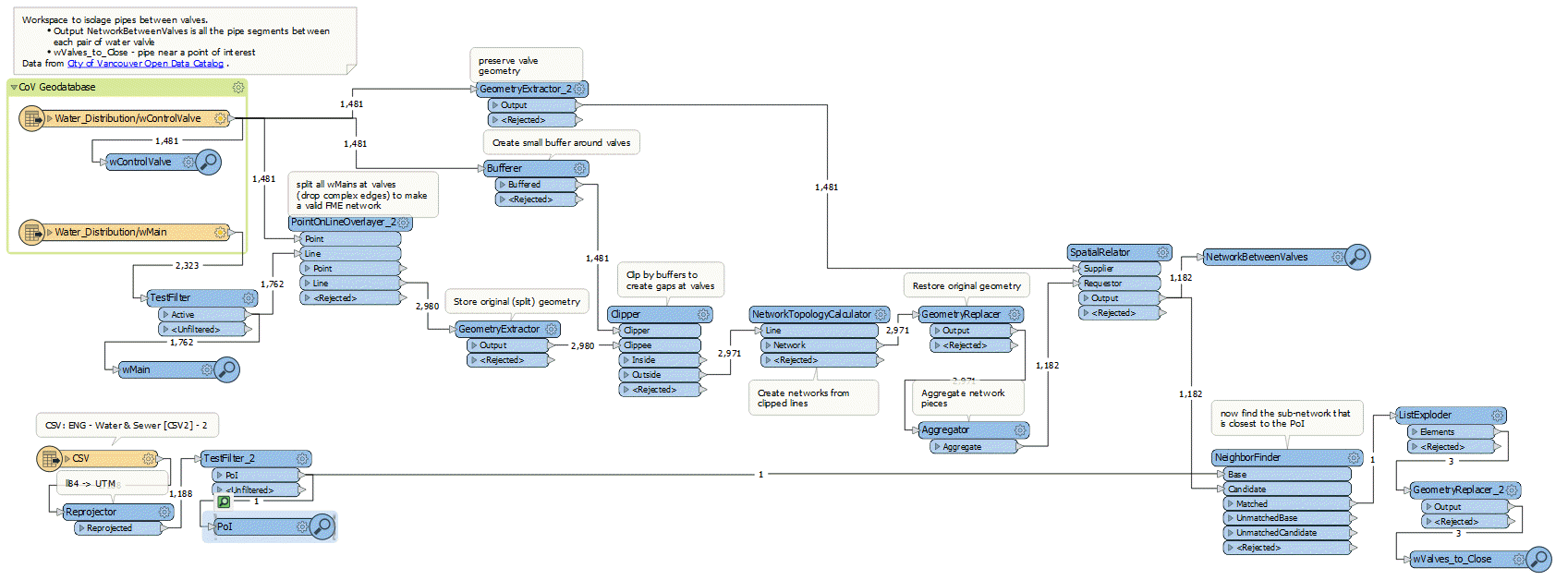Hi! I'm desperately trying to find a way to identify the impact of disabling a specific network on the surrounding networks. So far by using the NetworkTopologyCalculator, I've been able to isolate all my water networks, separated by water valves. But here is an example of what I'm trying to do:
If I have to replace the water pipe on the network A, I will close the water valves to isolate it. The impact would logically be that there would be no water reaching networks B-C-D-E. Is there any way for me to dynamically identify this in FME?
Thanks in advance for your help!






 I've also attached the example workspace and sample data (courtesy of
I've also attached the example workspace and sample data (courtesy of 




